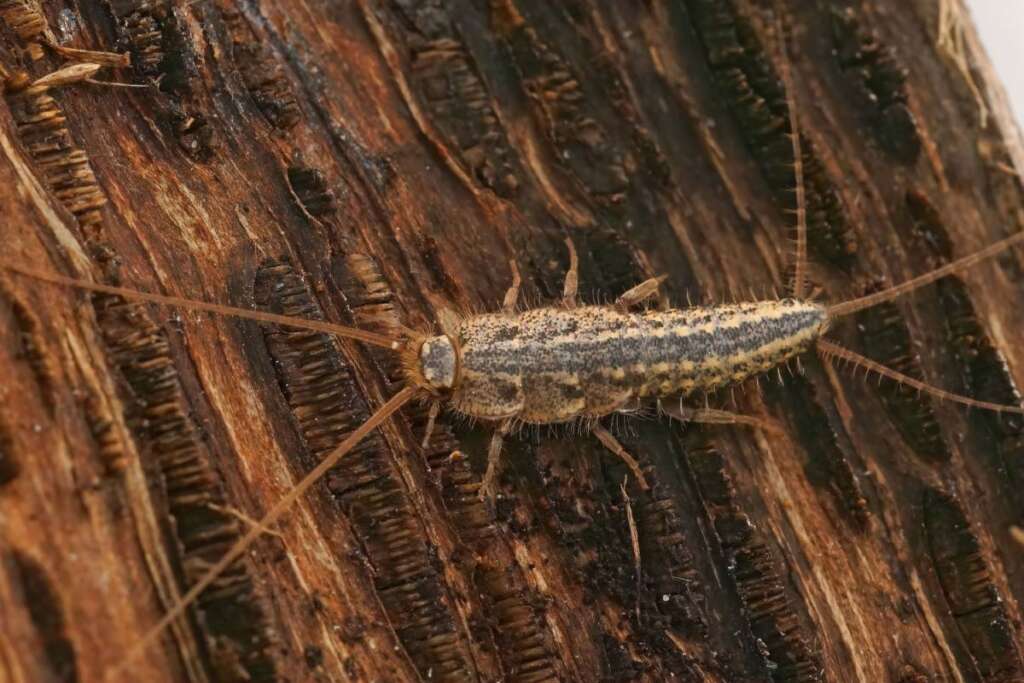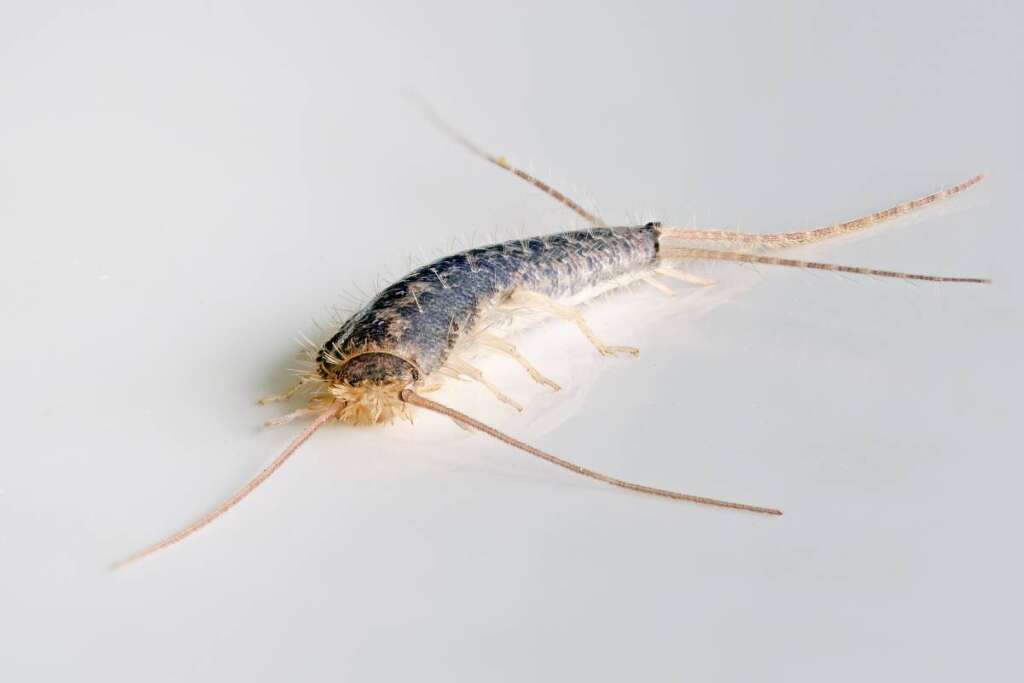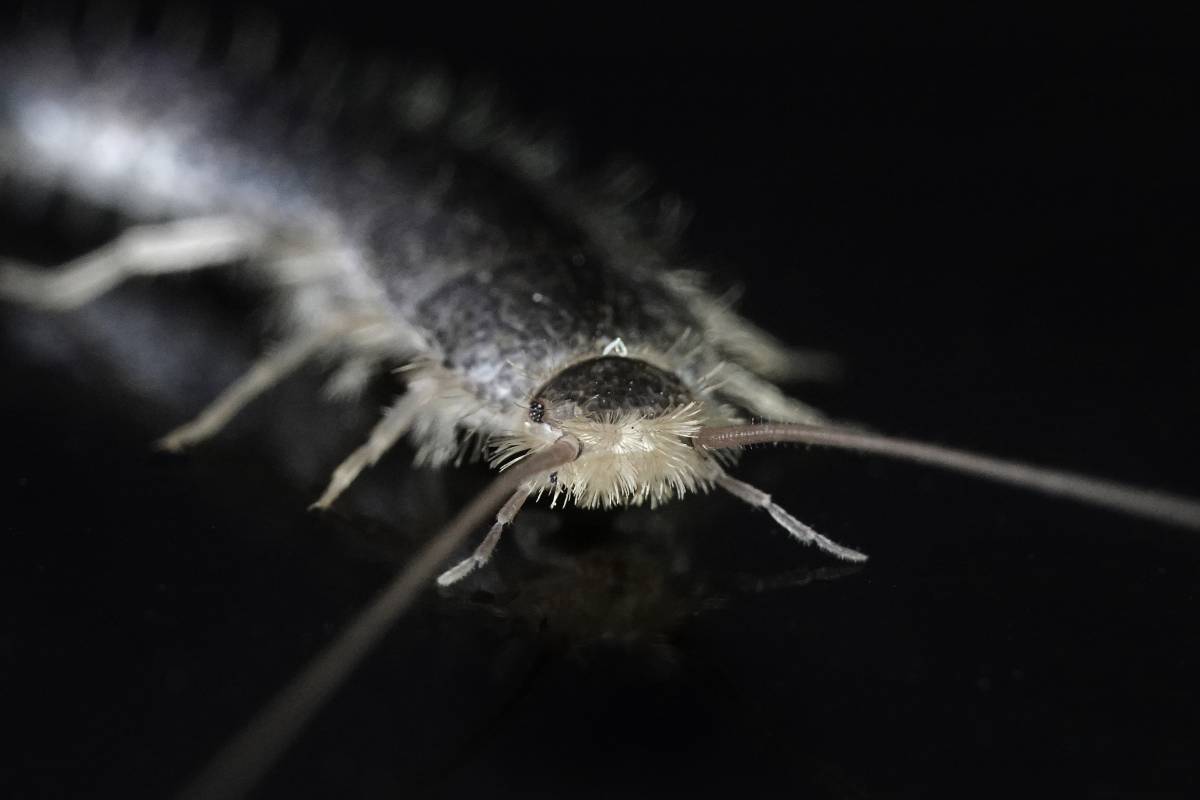There’s a chance you may have spotted silverfish scurrying across your floors or hiding in dark corners of your home. While these tiny, wingless insects are often an unsettling sight, understanding their behaviour and potential impact on your living space can help ease your concerns.
In this post, we’ll explore whether you should be worried about silverfish, what attracts them, and how to effectively manage a silverfish presence in your home.
Understanding Silverfish
As a homeowner, it’s important to understand the characteristics and behaviour of silverfish, elusive insects that thrive in damp, dark places. They are often found in basements, bathrooms, and kitchens, attracting attention due to their unique, fish-like shape and quick movements. Knowing more about these creatures can help you determine whether their presence is a cause for concern.
What Are Silverfish?
What you refer to as silverfish is a type of wingless insect belonging to the order Thysanura. These pests are small, typically measuring about 1/2 to 1 inch long, and are easily recognizable by their silvery-grey colour and long antennae. Silverfish primarily feed on carbohydrates found in materials like paper, glue, and even fabrics, which can make them a nuisance in your home.
Life Cycle and Habits
To understand silverfish, you should familiarize yourself with their life cycle and daily habits. Silverfish reproduce at a slow rate, laying approximately 50 eggs throughout their life, which can last up to three years. They prefer dark, humid areas, making attics, bathrooms, and kitchens ideal living environments. Their nocturnal nature means they are more likely to be active at night, searching for food and moisture.
Indeed, the life cycle of silverfish involves several stages: egg, nymph, and adult. After hatching, nymphs resemble small adults and undergo multiple moults before reaching full maturity. You may find these insects in your home seeking warmth and sustenance from organic materials. By controlling humidity and eliminating food sources, you can help deter silverfish from infesting your living space. Keeping your home clean and dry is key to managing these unwanted guests.

Signs of Silverfish Infestation
Now, it’s necessary to familiarize yourself with the signs of a silverfish infestation to protect your home. These nocturnal pests are small, wingless insects that often go unnoticed until their activity becomes apparent. Look for distinct characteristics like yellowish or silver-grey scales, as well as tiny holes in books, wallpaper, or clothing, which can indicate their presence. If you spot these signs, it may be time to take action.
Identifying Infestation Indicators
Before you can address a silverfish problem, you need to effectively identify the indicators of their infestation. Be on the lookout for rust-coloured stains, particularly in areas like basements or bathrooms that are prone to humidity. Additionally, if you find shed skins or tiny, irregular droppings resembling pepper, these are telling signs of a developing silverfish population in your home.
Common Areas of Activity
Along with identifying their indicators, knowing where silverfish tend to congregate is pivotal. These pests thrive in humid and dark environments, often making basements, attics, and kitchens their favourite hiding spots. You might also discover them lurking around bookshelves, especially if they are made of cardboard or paper, as well as in bathrooms where moisture is prevalent.
This understanding of common areas can help you effectively target potential problem zones. Silverfish are notorious for seeking shelter in tucked-away spaces, so regularly inspect areas like behind appliances, within storage boxes, and under sinks. Ensuring that your spaces are dry and clutter-free can minimize the likelihood of a silverfish infestation and protect your belongings from damage.
Are Silverfish Harmful?
Some homeowners worry about the presence of silverfish in their homes, but these pests are not known to pose significant health risks. They do not bite or sting, and they aren’t known to transmit diseases. However, their presence can be unsettling, and while they generally prefer to feed on starches found in items like paper and clothing, they can still encourage cleanliness issues and minor inconveniences.
Health Risks
Harmful as they may seem, silverfish do not carry or transmit diseases to humans, posing minimal health risks. They are more of a nuisance than a danger to your well-being, so while their presence may cause concern, you can rest easy knowing they won’t harm your health.
Property Damage
By feeding on a variety of materials, silverfish can cause damage to your belongings and property. If left unchecked, they can ruin books, wallpaper, and even clothes, which is why it’s important to address any infestations you may encounter.
In fact, damage caused by silverfish can be more than just cosmetic. They tend to chew through paper, fabric, cardboard, and even some types of glue, leading to ruined books, clothing, and furniture. This destruction may require costly replacements or repairs, making it wise to take immediate action if you spot these pests in your home.

Prevention Methods
After spotting silverfish in your home, it’s vital to implement preventive measures to avoid further infestations. Start by inspecting your living space and making necessary adjustments to minimize their habitat. This includes reducing clutter, sealing cracks, and managing humidity. Maintaining cleanliness and storage practices can significantly impact silverfish population control.
Home Maintenance Tips
Behind every effective prevention strategy is diligent home maintenance. Focus on these practices to keep silverfish at bay:
- Seal cracks and openings in walls and foundations.
- Store food in airtight containers.
- Regularly vacuum and dust corners.
- Fix leaks and maintain low humidity levels.
- Assume that any accessible area can attract pests, so keep it tidy.
Environmental Controls
Across each room of your home, the environment plays a significant role in attracting or repelling silverfish. Addressing moisture levels, air circulation, and light exposure can help keep them away. Silverfish thrive in damp, dark areas, so ensuring adequate ventilation and reducing humidity can deter infestations. Avoid overwatering plants and use dehumidifiers as necessary.
With strategic environmental controls, you can create an unfavourable habitat for silverfish. Consider utilizing ventilation fans in bathrooms and kitchens, ensuring your home is well-lit, and keeping surfaces dry. Regularly checking areas prone to moisture, like basements and attics, can also help you stay ahead of potential infestations.
Natural and Chemical Treatment Options
Not every silverfish infestation requires harsh chemicals. You can explore various natural methods like imperative oils, diatomaceous earth, and maintaining low humidity to create an inhospitable environment for these pests. However, if these options do not yield satisfactory results, chemical treatments may be necessary to effectively eradicate the infestation while ensuring the safety of your home.
DIY Solutions
Above all, you can implement several DIY solutions to combat silverfish. Start by sealing cracks and crevices in your home where these pests might enter. Use traps or homemade bait made from a mixture of sugar and baking soda to lure and kill them. Regular vacuuming and decluttering will also help significantly in reducing their habitat.
Professional Pest Control
Around infestations that persist despite your best efforts, Expert Pest Control can offer a definitive solution. These experts use targeted treatments tailored to your specific situation, ensuring long-lasting results. Additionally, they can provide insights into preventing future invasions by identifying entry points and recommending ongoing preventive measures.
The thorough assessment done by professional pest control technicians involves inspecting your home to determine the severity of the silverfish issue. They can apply effective insecticides or other treatment methods that are safe for your family and pets. By opting for professional help, you ensure that the infestation is dealt with effectively, allowing you to regain peace of mind in your living space.
Frequently Asked Questions
Once again, many homeowners have questions about silverfish and their presence in the home. While these pests won’t harm you directly, understanding their behaviour and how to manage them is vital. In this section, we’ll clarify some common concerns and provide insight into effective prevention and control methods.
Do Silverfish Bite?
Among the many misconceptions about silverfish, one prevalent question is whether they bite. Fortunately, these insects do not bite humans. Instead, they primarily feed on starches and sugars found in household items, making them more of a nuisance than a threat to your well-being.
How Do I Get Rid of Silverfish?
Silverfish can be persistent, but there are effective methods to eliminate them from your home. Start by reducing moisture levels, as these bugs thrive in damp environments. You can also create barriers using diatomaceous earth, set traps, or use insecticides specifically designed for silverfish. Maintaining a clean space and storing food in airtight containers can further deter their presence.
Further, sealing cracks and crevices in your home can significantly reduce their access points. You should also consider decluttering areas where they like to hide, such as basements and attics. Regular cleaning, along with these preventive measures, will help keep silverfish at bay and ensure a more comfortable living environment for you and your family.
Summing up
Following this, you should assess the presence of silverfish in your house with a balanced perspective. While they are not harmful to humans or pets, their presence indicates potential conditions that could lead to property damage. Taking proactive steps to reduce moisture and clutter will help deter them, ensuring your living space remains comfortable and safe.
If infestations become severe, consider contacting Expert Pest Control for assistance.








Leave a Comment